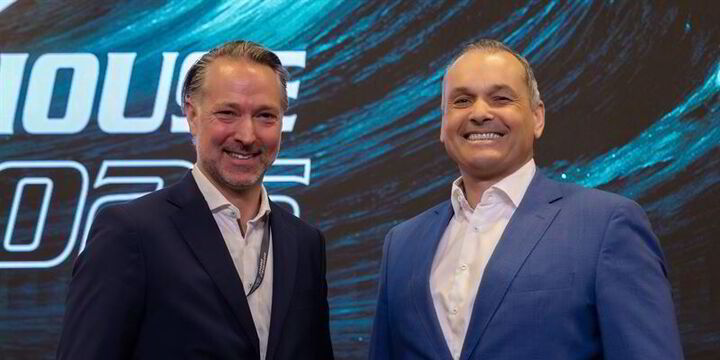World's First Floating Ammonia-to-Hydrogen Cracker Unveiled by Wartsila and Hoegh Evi
Key Ideas
- Wartsila and Hoegh Evi have successfully developed the first floating cracker that converts ammonia into hydrogen, marking a significant advancement in the energy transition.
- The innovative technology enables the production of hydrogen at an industrial scale from transported ammonia, with a production capacity of 210,000 tonnes per year and flexible ammonia storage options.
- The floating ammonia-to-hydrogen cracker is seen as a game-changer by industry experts, offering a reliable supply of clean energy to European industries and contributing to a more resilient and flexible energy infrastructure.
- Wartsila's financial performance in the first quarter of the year showed substantial growth, with increased revenue and a notable focus on alternative fuels, particularly within the marine sector.
Finnish technology group Wartsila, in collaboration with Norwegian company Hoegh Evi, has achieved a significant milestone by unveiling the world's first floating cracker that can convert ammonia into hydrogen. This breakthrough technology, developed in 2023, allows floating import terminals to produce hydrogen at an industrial scale from transported ammonia. With a production capacity of 210,000 tonnes per year, the cracker features a modular design that can be integrated into both Floating Storage and Regasification Units (FSRUs) and dedicated floating hydrogen terminals. The project, which was completed at Sustainable Energy’s Norwegian Catapult Center in Stord, Norway, is expected to play a crucial role in the energy transition.
The partners believe that this development is a game-changer in the industry, as it opens up new opportunities for global value chains to embrace green hydrogen. The technology addresses the challenges of hydrogen storage and transportation, paving the way for a more resilient and flexible energy infrastructure. With Europe aiming to import 10 million tonnes of renewable hydrogen per year by 2030 according to the EU's REPower strategy, the floating infrastructure with ammonia cracking technology is poised to unlock large-scale imports, providing stable baseload energy to hard-to-abate industries and contributing to a balanced energy system.
In addition to the technological advancement, Wartsila also announced positive financial results for the first quarter, with a notable increase in net profit and revenue. CEO Hakan Agnevall highlighted the growth in ship capacity demand, particularly in key segments such as cruise, ferry, and offshore. The company's focus on alternative fuels, representing 65% of the capacity of contracted vessels in the first quarter, indicates a strong commitment to sustainability and innovation within the marine technology sector.
Topics
Europe
Revenue Growth
Energy Transition
Alternative Fuels
Renewable Hydrogen
Marine Technology
Floating Infrastructure
Latest News
